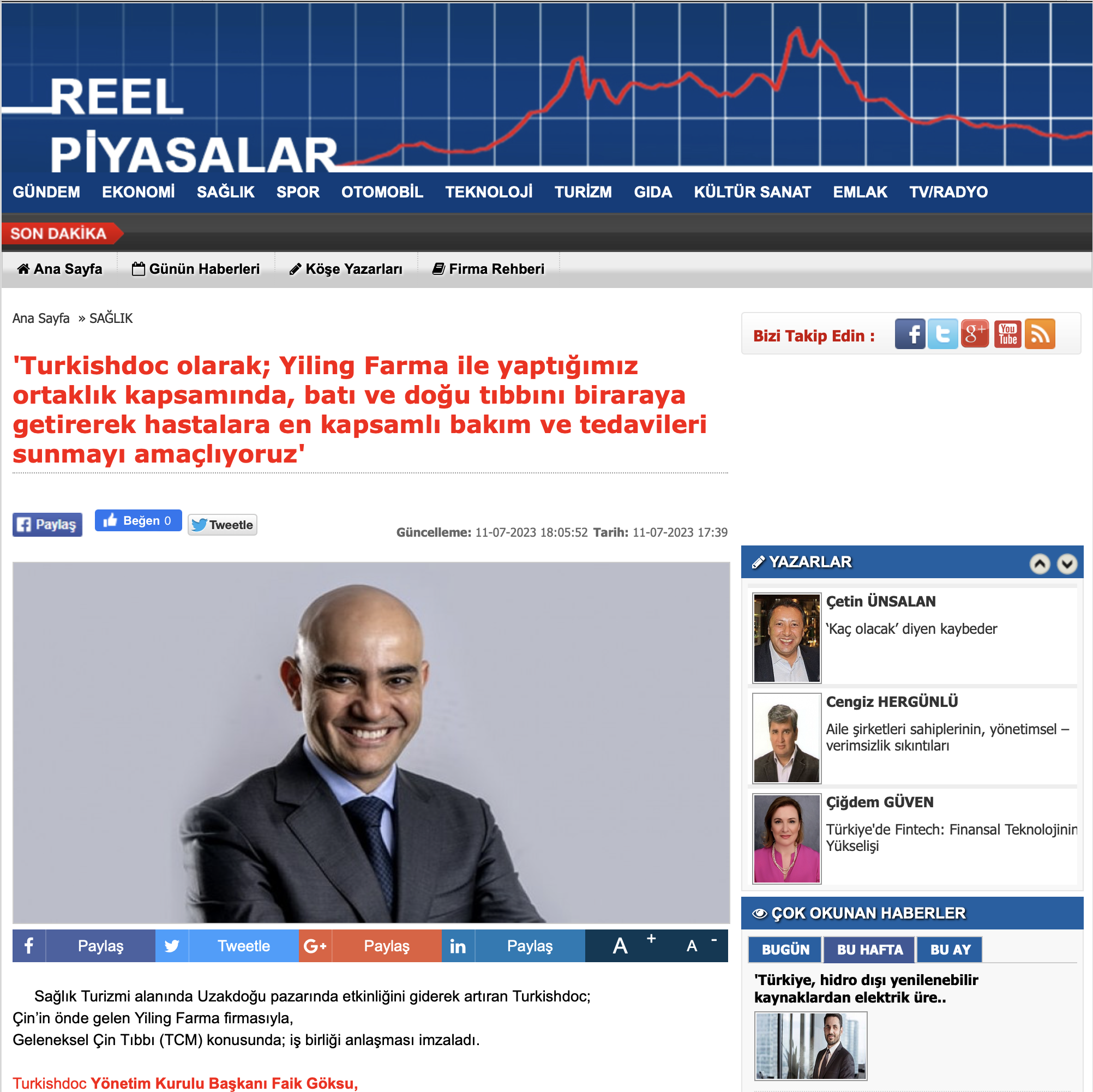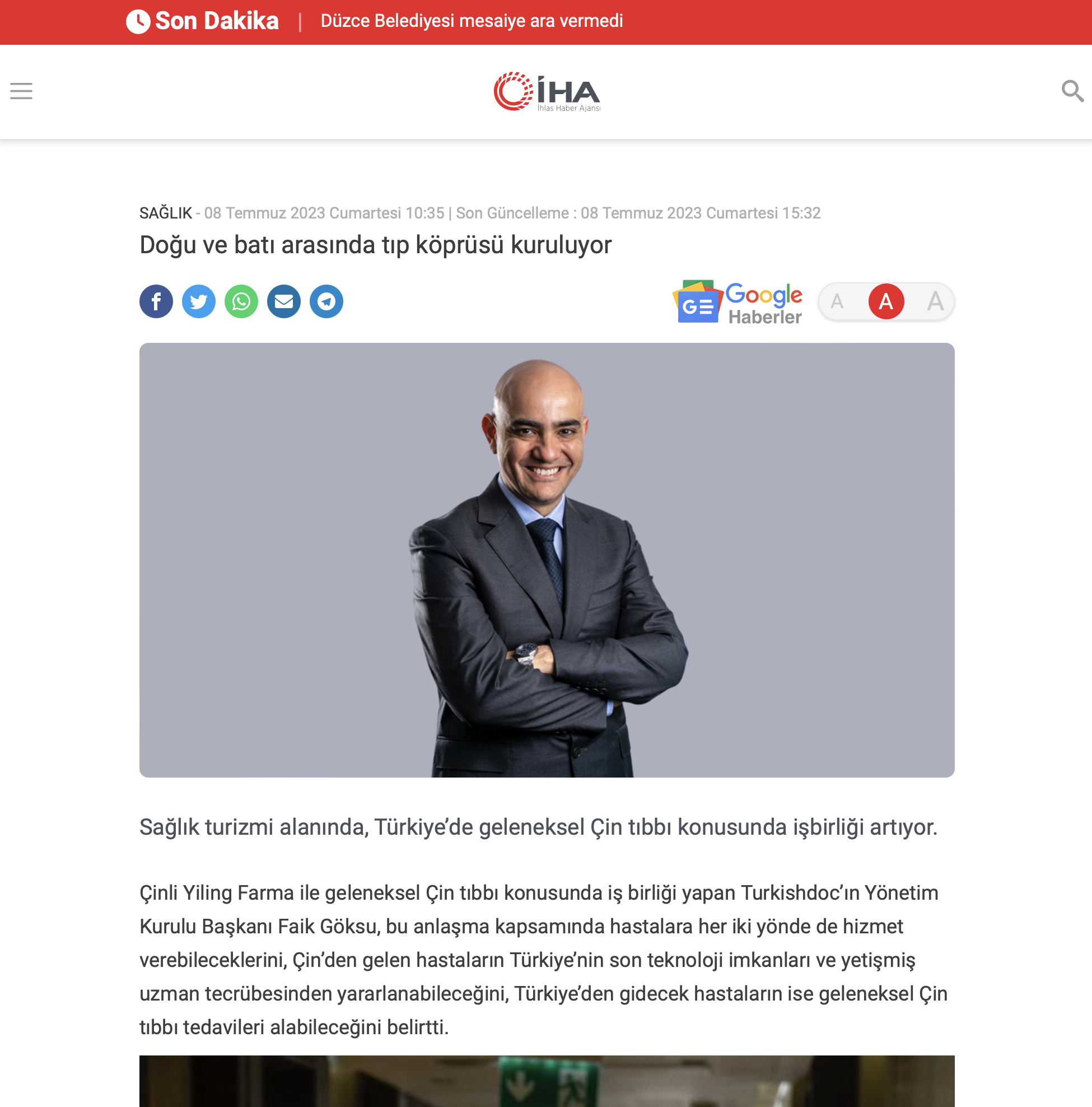Turkishdoc
What Is Trigeminal Neuralgia? Symptoms, Causes And Treatment Methods
Trigeminal neuralgia is a painful disease that occurs when the trigeminal nerve is affected. This disease, which shows symptoms in the facial area, causes chronic pain and crises. Severe pain becomes unbearable. Trigeminal neuralgia negatively affects the person’s life and restricts their actions. Even applying makeup and brushing your teeth can become difficult. This disease, which initially occurs with short and mild attacks, progresses over time. Thanks to the advances in medical science, some modern treatment methods are applied. Since it is confused with toothache, it sometimes causes conditions such as tooth extraction. Trigeminal neuralgia, which cannot be controlled with painkillers, must be treated by a specialist doctor with different methods.
Causes Of Trigeminal Neuralgia
There are many causes of trigeminal neuralgia. However, trigeminal neuralgia occurs when a blood vessel presses on the trigeminal nerve. However, it can also be caused by a tumor pressing on the nerve. Some degenerative diseases are also known to cause it. For instance, a rare cause is a multiple sclerosis. Therefore, the damage caused by the contact between the blood vessel and the trigeminal nerve is called trigeminal neuralgia. In addition to all these causes, abnormalities such as brain lesions, surgical injuries, facial trauma, or paralysis are also known to cause this disease.
In addition to its causes, trigeminal neuralgia also has some risk factors. In particular, age and gender are among the main factors. Women aged 50 and over are at increased risk factors for trigeminal neuralgia. Conditions such as hypertension and stroke can also be triggers.
Trigeminal Neuralgia Symptoms
There are many symptoms of trigeminal neuralgia, a disease that causes some problems in the facial area. Since it affects the facial area, the person starts to observe some symptoms in this area. Although the sudden and severe pain lasts for a short time, it has the effect of an electric shock. Signs of trigeminal neuralgia include the following:
- Severe and sudden pain in a certain area of the face
- Pain in half or all of the face
- Severe pain lasting a few seconds to minutes
- Pain resembling a toothache
- Pain when brushing teeth, applying makeup, and talking
- Recurrent pain attacks
- Pain in the cheek, teeth, lips, and jaw
- Sensitivity to wind breeze (feeling pain)
Therefore, severe pain in the cheek, chin, and nose areas of the face are among the symptoms of trigeminal neuralgia. Since the frequency of pain varies, it is unpredictable when it will occur. Sometimes facial pain recurs at short intervals, sometimes it may not occur for days. At this point, it is the intensity and continuity of the pain that should be considered. For this reason, if the above symptoms are experienced continuously and severely, you should see a doctor.
Trigeminal Neuralgia Diagnosis
Trigeminal neuralgia can be confused with many conditions. Other conditions can also cause facial pain. Therefore, a good diagnosis is essential. The most important step in diagnosing trigeminal neuralgia is to listen to the patient’s complaints and examine them. The location on the face, type, and triggers of this condition should be determined. Along with all these, some diagnostic methods need to be applied. Neurological examination and MRI results are among the common diagnostic methods used in this condition. Trigeminal neuralgia is diagnosed according to the results.
Trigeminal Neuralgia Treatment
Trigeminal neuralgia is a treatable condition. Therefore, some treatment methods need to be applied individually. Generally, medication is used. Especially for epilepsy, medications are used. There are some treatment methods to control this condition. Information about treatment methods for trigeminal neuralgia is given below:
Medications: Some medications are used in the treatment of trigeminal neuralgia to calm the patient’s pain. Anticonvulsants, antispasmodic agents, and botox injections are used in drug therapy on a patient-specific basis. Drug treatment aims to alleviate the symptoms of the disease and improve the quality of life. However, some side effects may occur with the medication. These include drowsiness, dizziness, sleepiness, and nausea. Medication is usually used during attacks.
Surgical procedures: Surgical procedures for trigeminal neuralgia include microvascular decompression and brain stereotactic radiosurgery. Microvascular decompression involves the displacement of blood vessels in contact with the trigeminal root. The trigeminal nerve is accessed by making an incision behind the ear. A soft cushion is placed between the nerve and the artery by removing the arteries from this nerve. Microvascular decompression is a successful surgical procedure that eliminates the pain caused by trigeminal neuralgia. However, this treatment does carry with it a few possible risks. These risks include facial numbness, paralysis, poor hearing, and similar complications.
Brain stereotactic radiosurgery: Brain stereotactic radiosurgery is the application of a radiation dose to the trigeminal nerve root. This surgical procedure is performed gradually to eliminate the pain caused by the trigeminal nerve. There is usually a risk of recurrence with this procedure. Facial numbness is a side effect. If there is a risk of recurrence, a repeat procedure can be performed. In general, this treatment method is also successful at eliminating trigeminal neuralgia.
Acupuncture treatment: Acupuncture, which has been widely used in the treatment of nerve diseases in recent years, is among the alternative medicine therapies. It is also applied to trigeminal neurology. Acupuncture is used to reduce pain and irritation on the nerve, especially during the attack periods of the disease. It is performed in sessions for six to eight weeks, allowing nerve functions to function better.
Glycerol injection: Glycerol injection involves injecting a small amount of sterile glycerol into the trigeminal nerve ganglion and trigeminal cisterna. This injection irritates the trigeminal nerve while also inhibiting the transmission of pain impulses.
Radiofrequency thermal lesioning: To reach the trigeminal nerve, a needle is inserted into the skull base and an electric current is used. Heat is applied for a while, and then a lesion forms. In this way, nerve fibers are damaged. However, it is possible to see symptoms of trigeminal neuralgia several years after this procedure. It is therefore a temporary treatment method.
Balloon compression: In this procedure, a tube called a cannula must be inserted from the cheek to the trigeminal nerve. A catheter containing a small balloon is inserted into the tube, the balloon is inflated, and the damaged nerves are destroyed. As a side effect, the face may feel numb. The effect of this procedure lasts for one to two years and is therefore temporary.











